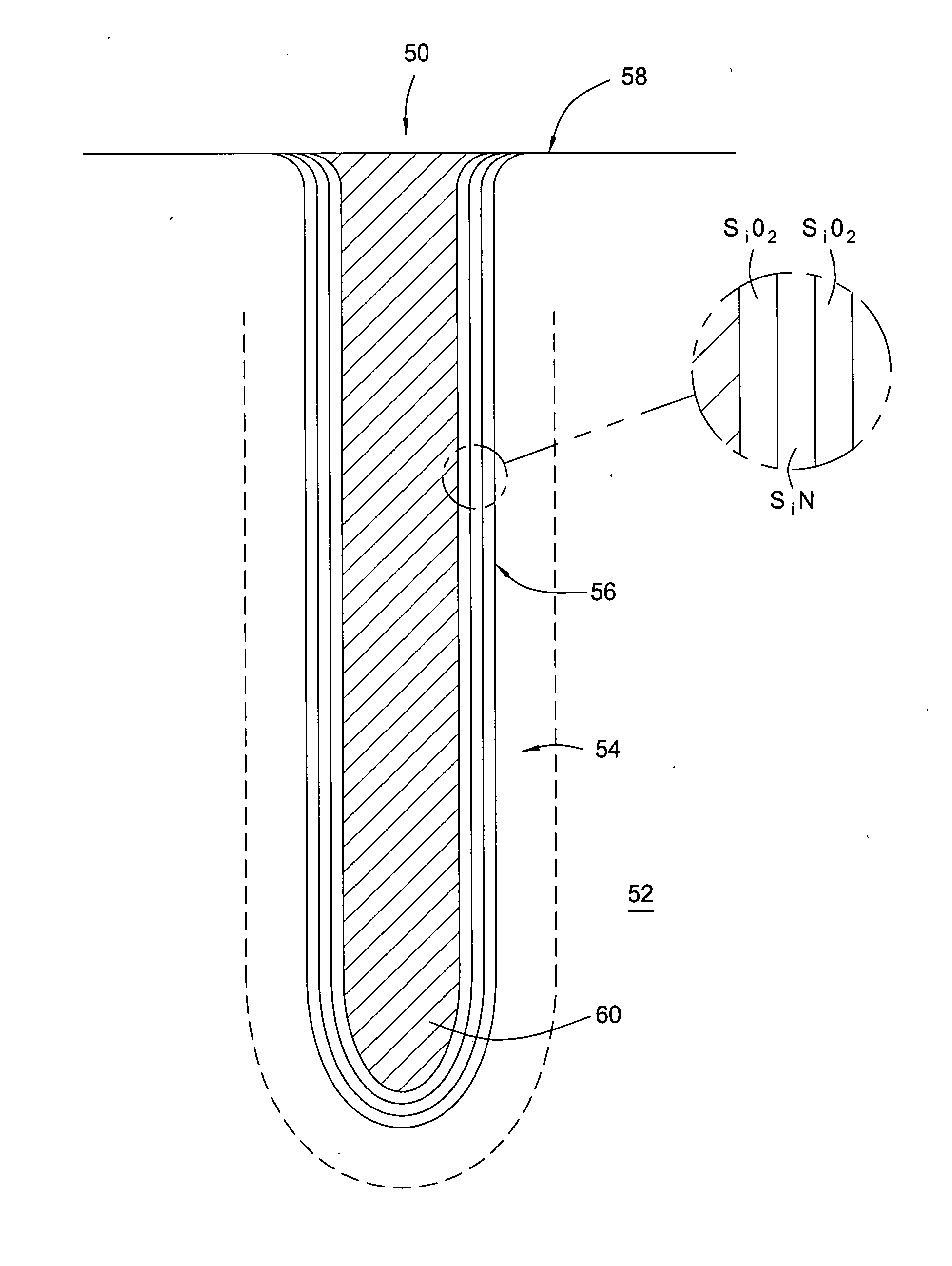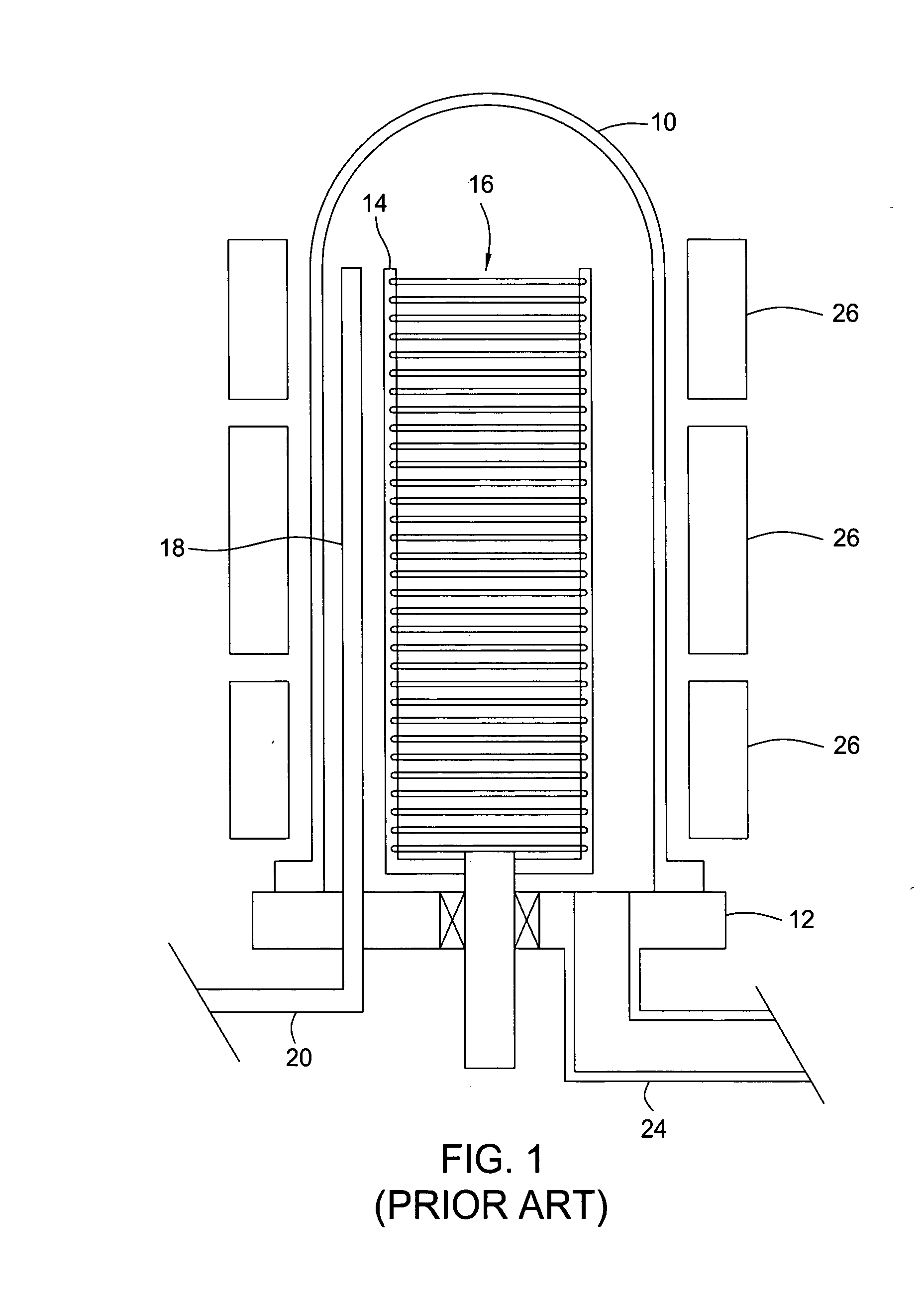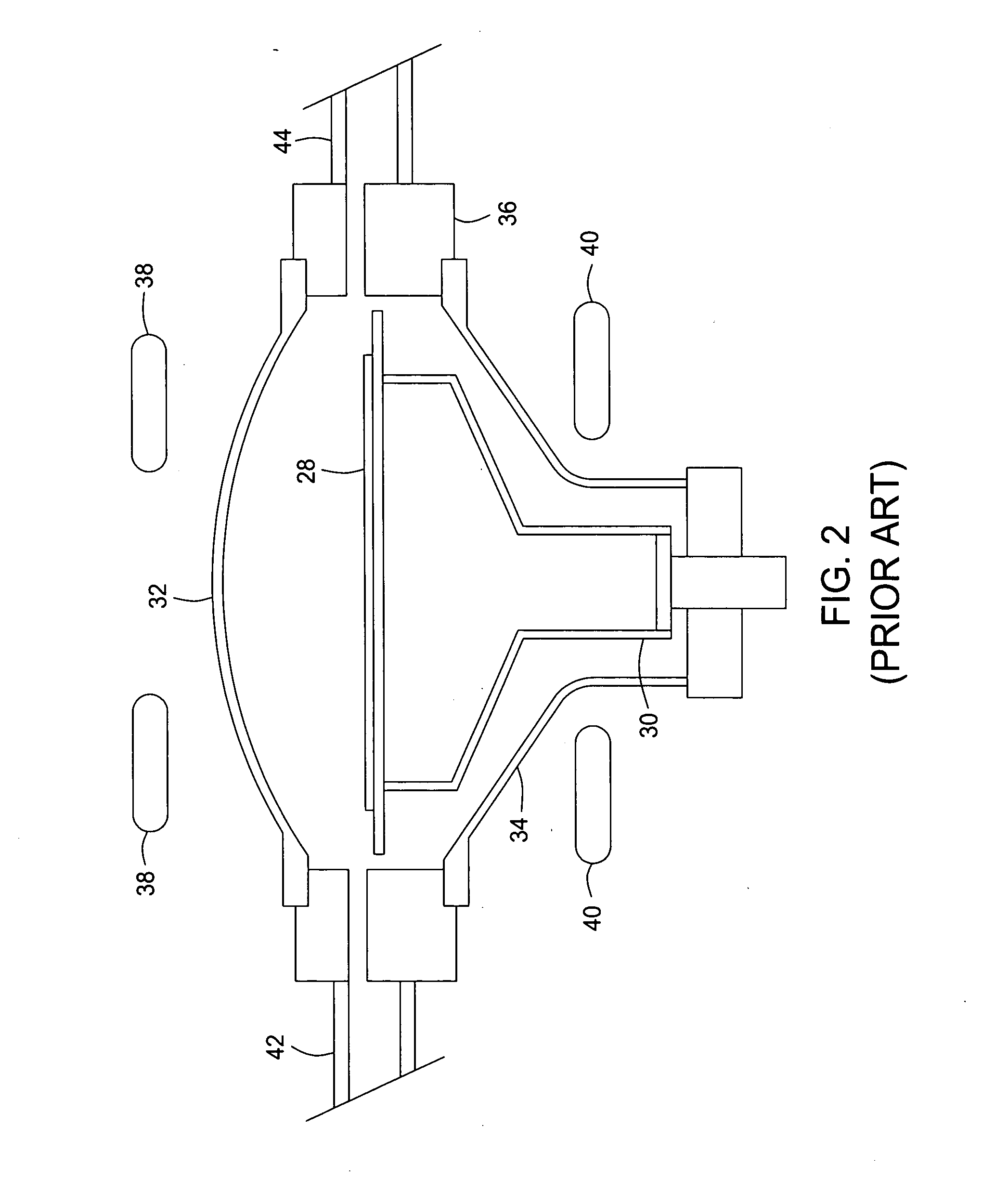Process sequence for doped silicon fill of deep trenches
a technology of deep trenches and process sequences, which is applied in the direction of coatings, chemical vapor deposition coatings, solid-state devices, etc., can solve the problems of slow deposition rate, high deposition rate within the trench relative to the surface, and short residence time of gases on the wafer surface, etc., and achieves the effect of high deposition ra
- Summary
- Abstract
- Description
- Claims
- Application Information
AI Technical Summary
Benefits of technology
Problems solved by technology
Method used
Image
Examples
Embodiment Construction
[0034] By way of the present invention it is possible to fill deep trenches with in-situ doped amorphous silicon, and particularly As doped amorphous silicon films, without the formation of voids, while at the same time producing deposited films of high quality, having a step coverage of greater than 100%, and as much as 150%, a WIW (With In Wafer) non uniformity of 20 / cm3. In addition, in the case of multiple wafer processing, such as is achievable in the FlexStar chamber, hereinafter described, as many as 26-51 wafers can be processed at once.
[0035] In the fabrication of deep trench capacitor structures, trenches of high aspect ratio are first formed in single crystal wafers, such trenches having aspect ratios of 25-50:1 or greater, such as may be required for ever smaller critical dimension structures. With reference to FIGS. 4 and 5, in order to provide for a void free trench fill, the filling sequence is carried out in a number of separate steps. To start, a partially processe...
PUM
| Property | Measurement | Unit |
|---|---|---|
| temperature | aaaaa | aaaaa |
| pressure | aaaaa | aaaaa |
| temperature | aaaaa | aaaaa |
Abstract
Description
Claims
Application Information
 Login to View More
Login to View More - R&D
- Intellectual Property
- Life Sciences
- Materials
- Tech Scout
- Unparalleled Data Quality
- Higher Quality Content
- 60% Fewer Hallucinations
Browse by: Latest US Patents, China's latest patents, Technical Efficacy Thesaurus, Application Domain, Technology Topic, Popular Technical Reports.
© 2025 PatSnap. All rights reserved.Legal|Privacy policy|Modern Slavery Act Transparency Statement|Sitemap|About US| Contact US: help@patsnap.com



